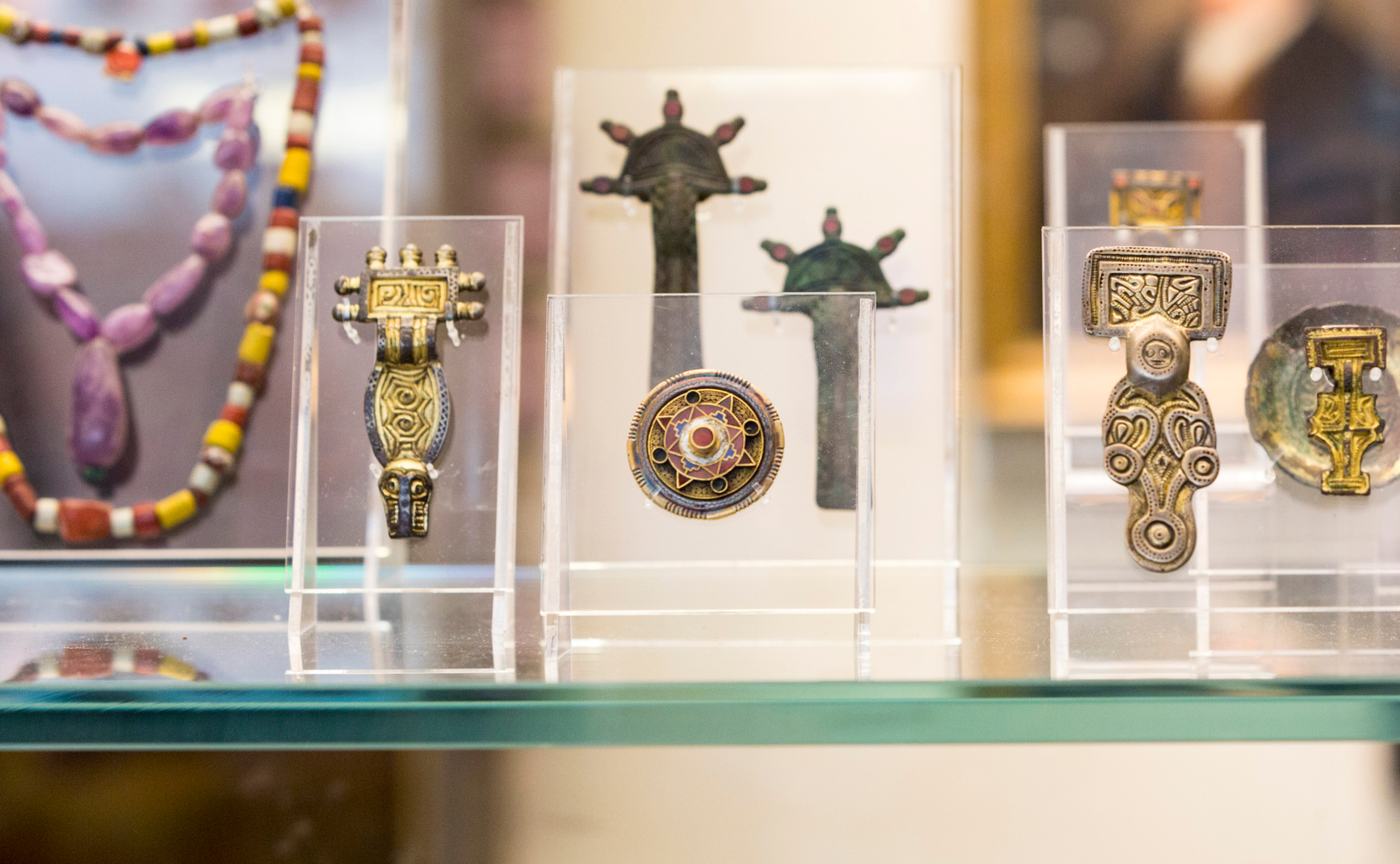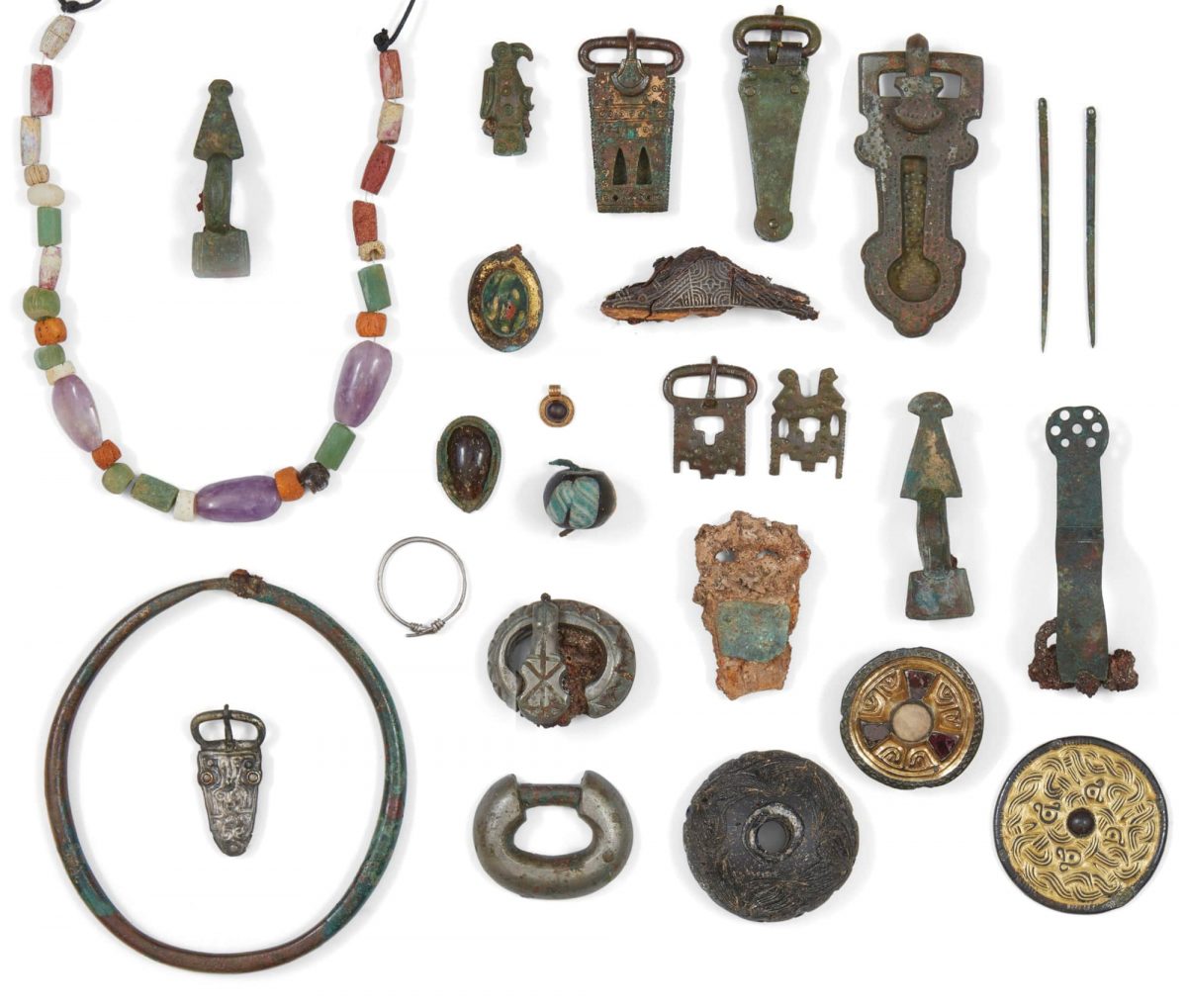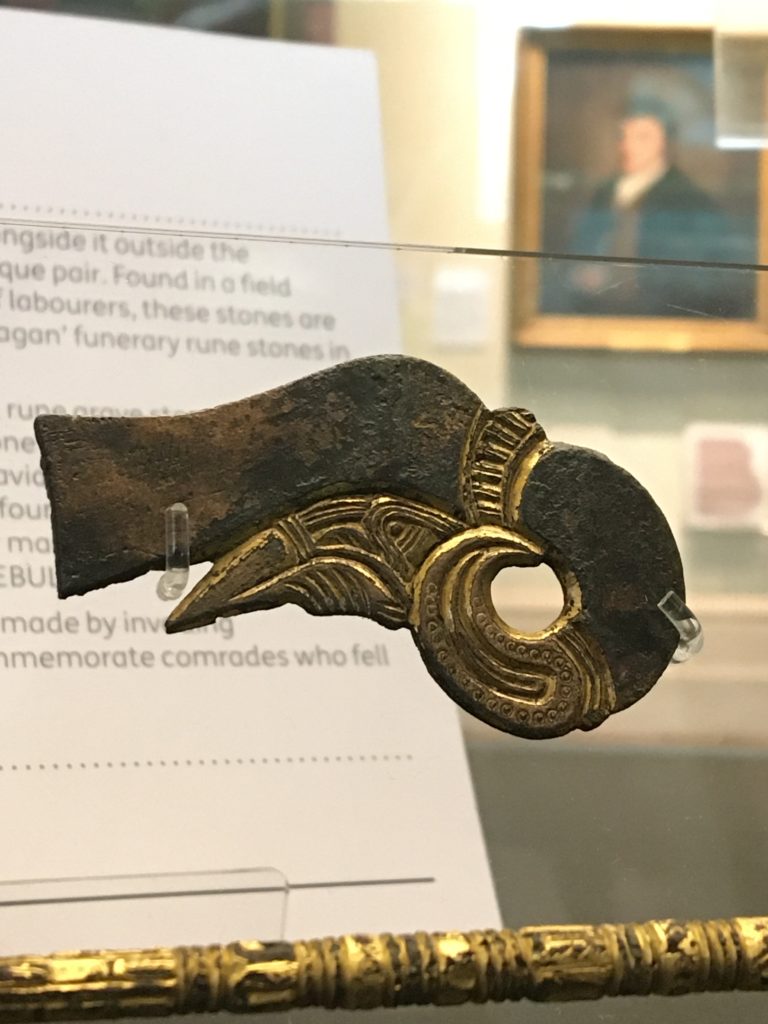Anglo-Saxon Heritage in Kent

Introduction to Anglo-Saxon Kent
Kent holds a unique place in British history as one of the first territories settled by Germanic tribes following the withdrawal of the Romans in the early 5th century. The county's Anglo-Saxon heritage is particularly significant, as it represents the beginning of post-Roman England and the establishment of what would become one of the most powerful kingdoms of the Anglo-Saxon Heptarchy.
The Anglo-Saxon period in Kent spans approximately six centuries, from the arrival of the Jutes around AD 450 to the Norman Conquest of 1066. During this period, Kent developed from a collection of small settlements to a prosperous kingdom with international trading connections, its own kings, distinctive laws, and cultural traditions. It also played a pivotal role in the reintroduction of Christianity to England, which would fundamentally shape the religious and cultural landscape of the entire country.
The Arrival of the Jutes and Establishment of the Kingdom of Kent
Unlike much of Anglo-Saxon England, which was settled predominantly by Angles and Saxons, Kent was primarily settled by the Jutes, a Germanic tribe from the Jutland Peninsula (modern Denmark). This Jutish heritage gives Kent a distinctive identity within Anglo-Saxon England and accounts for some of the cultural and linguistic differences that set Kent apart from other regions.
According to the Venerable Bede's Historia Ecclesiastica Gentis Anglorum (Ecclesiastical History of the English People), written in the early 8th century, the Jutes were invited to Britain by the British king Vortigern to help defend against Pictish and Scottish raids following the Roman withdrawal. Led by the legendary brothers Hengist and Horsa, these mercenaries eventually turned against their British employers and established their own territory in what is now Kent.
Whether or not this traditional account is entirely accurate, archaeological evidence confirms that Germanic settlements were established in Kent from the mid-5th century onwards. By the end of the 6th century, a distinct kingdom of Kent had emerged, which would become one of the most powerful and influential of the early Anglo-Saxon kingdoms.
Did You Know?
The name 'Kent' is one of the oldest recorded place names in Britain, derived from the ancient Celtic tribe called the Cantiaci who inhabited the area before the Roman conquest. This name was adopted and adapted by the Anglo-Saxons as 'Cent' or 'Cantware'.
Key Anglo-Saxon Sites in Kent
Canterbury
Canterbury was a significant Roman town (Durovernum Cantiacorum) that was reoccupied and developed by the Anglo-Saxons. It became the royal seat of the Kings of Kent and, following the arrival of St Augustine in 597, the ecclesiastical centre of Anglo-Saxon England. St Martin's Church in Canterbury, still standing today, is the oldest parish church in continuous use in the English-speaking world and was used by Queen Bertha, the Christian wife of King Ãthelberht, before Augustine's arrival.
Lyminge
Archaeological excavations at Lyminge have revealed one of the most important Anglo-Saxon settlements in Kent. The site includes evidence of a royal hall complex dating from the 7th century, as well as a later Anglo-Saxon monastery. Lyminge was one of the early power centres of Kent before Canterbury became the dominant royal and ecclesiastical site.
Eastry
Eastry was another significant royal centre in early Anglo-Saxon Kent. Though less extensively excavated than Lyminge, documentary evidence suggests it was an important royal vill (estate) and possibly the site of a royal palace.
Reculver
Reculver (Regulbium) was initially a Roman fort that was later reused by the Anglo-Saxons. In 669, a monastery was established here, which became an important ecclesiastical centre. The distinctive twin towers of the ruined church are a landmark on the north Kent coast.
Faversham
The discovery of the King's Field Anglo-Saxon cemetery at Faversham in the 19th century revealed some of the richest Anglo-Saxon burials in England, suggesting the presence of a significant high-status settlement in the area.

An Anglo-Saxon hoard discovered in Kent, showing the remarkable craftsmanship of the period
Notable Anglo-Saxon Artifacts and Discoveries
Kent has yielded some of the most spectacular Anglo-Saxon artifacts found in Britain, demonstrating the wealth, craftsmanship, and international connections of the kingdom.
The Kingston Brooch
Discovered in a grave at Kingston Down near Canterbury in the 18th century, this magnificent composite disc brooch is one of the finest examples of Anglo-Saxon goldwork and cloisonné ever found. Dating from the 7th century, it features garnets and glass inlaid in gold cells, demonstrating the exceptional craftsmanship of Kentish jewellers.
The Ozengell Hoard
Acquired by the Kent Archaeological Society in 2022, this remarkable collection of Anglo-Saxon metalwork includes shield fittings, buckles, and other military equipment from the 6th and 7th centuries, providing insights into Anglo-Saxon warfare and burial practices.
Sarre Cemetery Finds
Excavations at the Anglo-Saxon cemetery at Sarre have yielded numerous high-quality grave goods, including glassware demonstrating connections with the Frankish Kingdom across the Channel. These finds highlight Kent's position as a gateway for continental trade and influence.
Benty Grange Sword
The discovery of an exceptionally well-preserved 6th-century sword with decorative mounts in an Anglo-Saxon cemetery in Kent provides evidence of the warrior culture and craftsmanship of the period.
Religious Significance and the Arrival of Christianity
One of the most important aspects of Kent's Anglo-Saxon heritage is its pivotal role in the reintroduction of Christianity to England. In 597, Pope Gregory the Great sent Augustine with a group of missionaries to convert the Anglo-Saxons. They first arrived in Kent, where King Ãthelberht, whose Frankish wife Bertha was already Christian, received them.
Ãthelberht's conversion to Christianity was a watershed moment in English history. He granted land for the establishment of a monastery in Canterbury, which would become the foundation of Canterbury Cathedral and the seat of the first Archbishop of Canterbury. From Kent, Christianity gradually spread throughout Anglo-Saxon England.
Evidence of this early Christian period can still be seen in Kent today, including:
- St Martin's Church, Canterbury - parts of the church date back to the late Roman period, making it the oldest church building in England still in use
- The ruins of St Augustine's Abbey in Canterbury, established by Augustine around 598
- Fragments of Anglo-Saxon stone churches at sites such as Lyminge, Reculver, and Minster-in-Sheppey

Anglo-Saxon decorative mount from Kent showing the blend of pagan artistic traditions with Christian symbolism
The transition from paganism to Christianity was not immediate or complete. Archaeological evidence shows that pagan and Christian practices often coexisted during the 7th century, with many burials showing elements of both traditions. This gradual transition is reflected in the art and material culture of the period, which often blends pagan and Christian motifs.
The Anglo-Saxon Kings of Kent
The Kingdom of Kent was ruled by the Oiscingas dynasty, named after Oisc, the son or grandson of the semi-legendary Hengist. While the early genealogies are likely partly mythical, by the late 6th century, we enter more secure historical territory with King Ãthelberht I (c. 560-616).
Ãthelberht I - The first English king to convert to Christianity. Under his reign, Kent became the dominant power in southern England, with influence extending as far as the Humber.
Eadbald - Son of Ãthelberht. Initially rejected Christianity but was later reconverted.
Eorcenberht - The first English king to order the destruction of pagan idols throughout his kingdom.
Ecgberht I - During his reign, Kent began to face increasing pressure from the rising power of Mercia.
Ãthelberht II - A period of relative stability and prosperity for Kent, though increasingly under Mercian influence.
Offa of Mercia - Though not a Kentish king, he conquered and directly ruled Kent, minting coins as "King of Kent".
Incorporation into Wessex - Following the Battle of Ellendun, Kent came under the control of Wessex and eventually was incorporated into the unified Kingdom of England.
The Kentish kings developed a unique legal code, known as the Law of Ãthelberht, which is the earliest known written law code from any Germanic people. These laws reveal much about Kentish society, including its social structure, the rights of women (which were more extensive than in later Anglo-Saxon England), and the importance placed on maintaining peace and order.
Legacy and End of Anglo-Saxon Kent
By the 9th century, Kent had lost its independence and was incorporated into the expanding kingdom of Wessex. It suffered extensively from Viking raids during the 9th and 10th centuries, particularly along the vulnerable coastal and estuarine areas.
Despite this political decline, Kent maintained its cultural and religious significance throughout the later Anglo-Saxon period. Canterbury remained the ecclesiastical centre of England, and Kentish craftsmen continued to produce high-quality work.
The Norman Conquest of 1066 marked the end of the Anglo-Saxon period, but Kent's Anglo-Saxon heritage continued to influence the county's development. William the Conqueror recognised the special status of Kent by respecting many of its traditional laws and customs, including the distinctive inheritance system known as 'gavelkind', which divided land equally among all sons rather than following the Norman practice of primogeniture.
Kent's Anglo-Saxon heritage remains visible today in place names (many ending in '-ham', '-ton', or '-den'), church buildings, museum collections, and archaeological sites across the county. The Anglo-Saxon period laid the foundations for Kent's distinctive identity within England, establishing many of the towns, villages, and transport routes that still define the county's geography.
